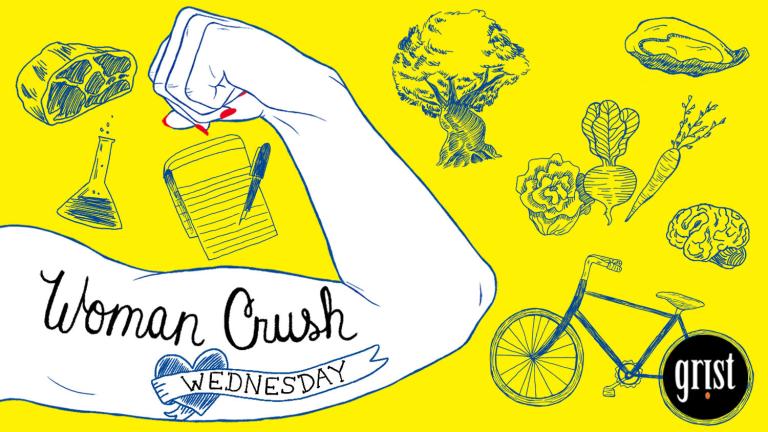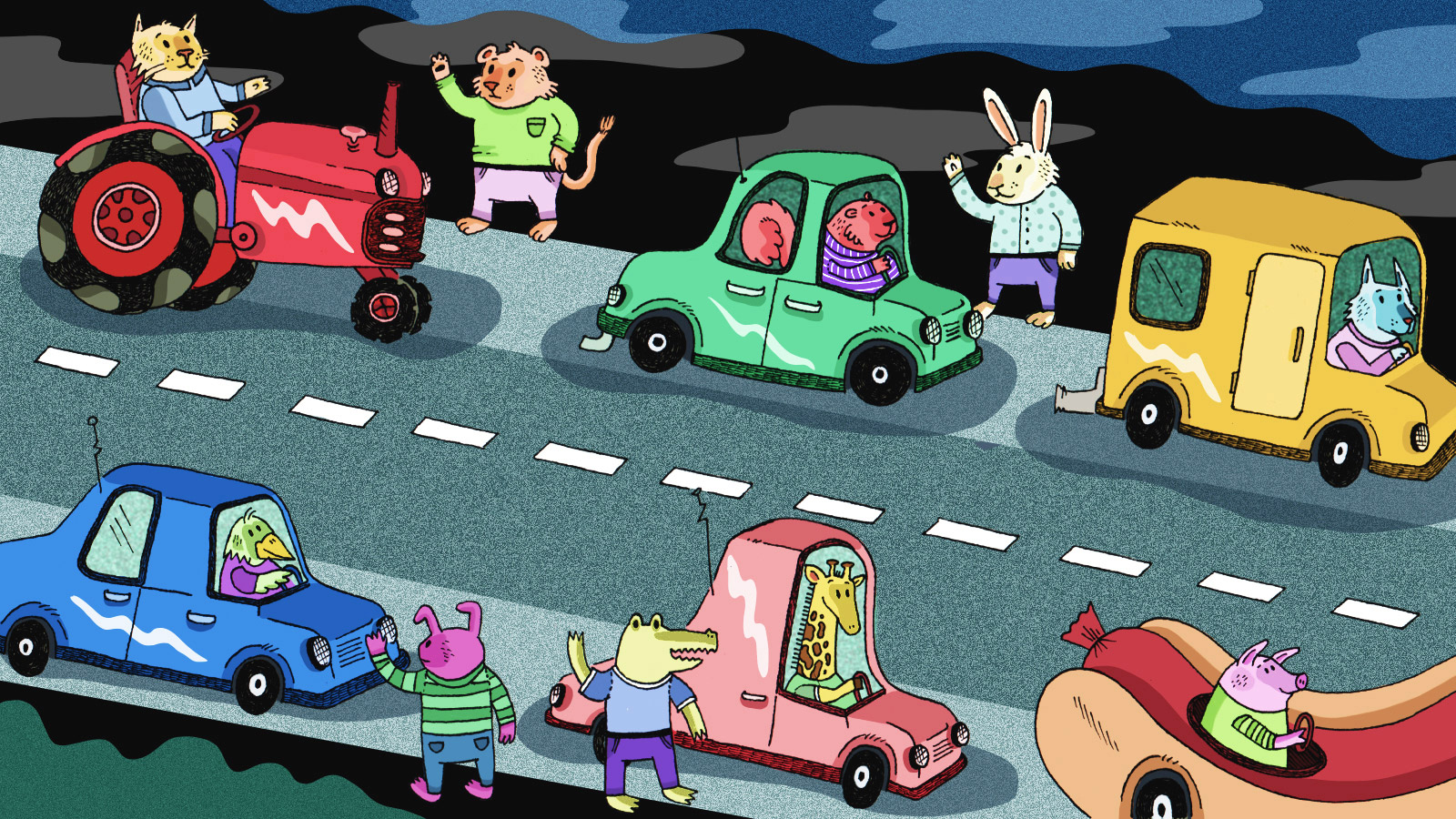L was just out of school and in the process of starting her own business. I’d known her through friends in San Francisco and to me she seemed like the embodiment of the San Francisco bootstrapper type that fills the city’s coffee shops and restaurants and temp pools — people who juggle multiple jobs, sometimes for years, while they lay down the foundation for making a living at the thing they really love, or at least the thing that will actually pay the rent without having to hustle so hard.
L had a decent car, and she liked talking to people. So why not put the maximum amount of energy into learning small-business regulations and building up clients, and just drive for Uber and Lyft in her spare time?
Her schedule shook out like this: L would get up in the morning and drive for three hours during peak commute hours. She’d take a break to meet with her first few clients in the career she’d studied for — therapy. Then she’d go back out on the road to work the evening commute.
The job had its charms. The passengers were interesting: everyone from techies to businesspeople in the Marina to college kids carpooling to and from SF State. When Lyft rolled out a feature last summer called Lyft Line, which let people share Lyft rides with strangers, she noticed that passengers were using it to flirt with each other. It was like vehicular-based speed dating, and it was better than television.
L got really, really good at driving — or at least really fast. Her friends began to tell her that she drove like a cabbie. On an average day, she made about $25 an hour before taxes — about as much as she would have made temping at an office downtown, but with the ability to choose her own hours. If she was driving home late at night after a party, L could just sign into the network and pick up a few fares on her way home.
Moments like that could make the strange technological leap brought on by smartphones, and their eerie ability to track the movements of everyone carrying them, look almost utopian. If someone had wanted do this a decade ago they wouldn’t have been able to. Here, suddenly, was an elegant way to sidestep the frustrations of public transit — the lateness, the sheer amount of time it took — and connect people who needed to go somewhere with other people who could take them there.
You weren’t likely to shed tears for the taxi companies that were going into apoplexy over this development. Taxis cost a lot of money. They were never around when you needed them. The actual taxi drivers made terrible wages, even while the taxi medallions that limited their numbers on the streets made healthy profits for medallion holders. In New York City, taxi medallions appreciated 8 percent annually between 1980 and 2011, making them a better bet than gold.
Gradually, the less charming aspects of this new, part-time gig began to reveal themselves to L. The apps for both companies were buggy. L would be halfway to a fare and the network would forget who she was supposed to be picking up, or would say clients were two blocks away from where they actually were. There was no help line when this happened. Uber in particular bragged about not having any phones and only handling problems over email, and it often responded to emails with form replies. Lyft was more chummy. It assigned new recruits a mentor who had experience driving for the company. Unlike Uber, it organized meetups so that drivers could trade stories and information — but the company was slow to answer questions mentors couldn’t.
Her car started acting up. It needed new tires. The oil needed to be changed every two months now. Her brakes were on their way out, too. Uber and Lyft got caught up in a turf war. Both offered bounties to drivers who brought new drivers on board — $500 per person, in San Francisco. Both companies began lowering fares and introducing deals and discounts.
L noticed that she spent a lot more time waiting for fares and a lot less time driving them around. Her average wage dropped to around $18 an hour. She began spending time in the various corners of the internet where drivers hung out and chatted with each other. A lot of the chatting was just that — blowing off steam, posting photos of particularly attractive cars — but the forums were also the places where drivers tried to sort out the weirdness of their work situations. Were they allowed to pick up fares at the airport? Uber had sent L a permit to do airport pickups, but when she asked Lyft for one, she got a vague answer, suggesting that Lyft might cover any tickets if she got them, but it wasn’t going to make any promises.
Yeah, they’re paying tickets, other people on the forums said. At least for now. Then Lyft sent out a message: Don’t pick up fares at the airport anymore. Wait for your permit. Drivers found themselves in awkward situations, turning away passengers who tried to hail them at the airport with the Lyft app, when they only had a permit for Uber.
L began to hear rumors that people were being dropped by their car insurance when the companies that provided it found out they were driving for Lyft or Uber. When she started driving, she was told that Lyft and Uber would pay for any damage incurred while she was working, but their deductible was $3,000. If she got into a single accident, paying the deductible would cost her weeks of earnings. The insurance, she learned, didn’t cover injuries if she was hurt — only injuries to any passengers. She complained about these issues privately, with friends and other drivers, but hesitated to speak out publicly, out of fear of being “delisted” as a driver for either service. (For the same reason, she asked that we not use her name in this story.) “I felt kind of clueless,” said L. “The more I learn, the more I want to keep this temporary.”
For years, local governments had shut down or squeezed out new competitors to the regulated taxi services — particularly low-cost ones, like jitneys and dollar vans. But Uber, in particular, was beginning to look more like the establishment than a challenger, despite the bans that began to appear in some places: Portland, Vegas, Spain, Holland, New Delhi, Thailand, and (sort of) France. It was powerful and well-funded enough to hire David Plouffe, former White House senior advisor and manager of Obama’s 2008 campaign, even while there were rumors that the company was expanding so aggressively that it sparked an antitrust investigation.
Through all of this, Uber maintained that it needed to be regulated in a fundamentally different way (or, preferably, not at all) because it was a technology company, not a taxi service. It was just an app through which people who wanted rides connected with people who were offering them — an interface that skimmed 20 percent off the transaction between each rider and driver, sure, but basically, just a collection of ones and zeroes.
Behind the tech talk, though, Uber was an old-fashioned company, working off a set of assumptions that dated back to the late ’60s, when the details of a new class of worker — the temp — were being hammered out. In an advertisement, Kelly Services, which would come to dominate the market, described this new worker as the “Never-Never Girl”:
Never takes a vacation or holiday. Never asks for a raise. Never costs you a dime for slack time. Never has a cold, slipped disc or loose tooth. Never costs you for unemployment taxes and Social Security payments.
That “girl” was deliberate — a way of getting around union opposition by portraying the work that temps did as the kind of work that no decent red-blooded union member would want to do, and also of playing off resentments around women in the workforce.
We’re all Never-Never Girls these days, regardless of gender. But why does it have to be this way? What’s stopping a startup from coming along and disrupting the hell out of wages or benefits? Why are we using all the promise of this current era to build a high-tech replica of the past?
Next: The secret history of the taxi wars.




